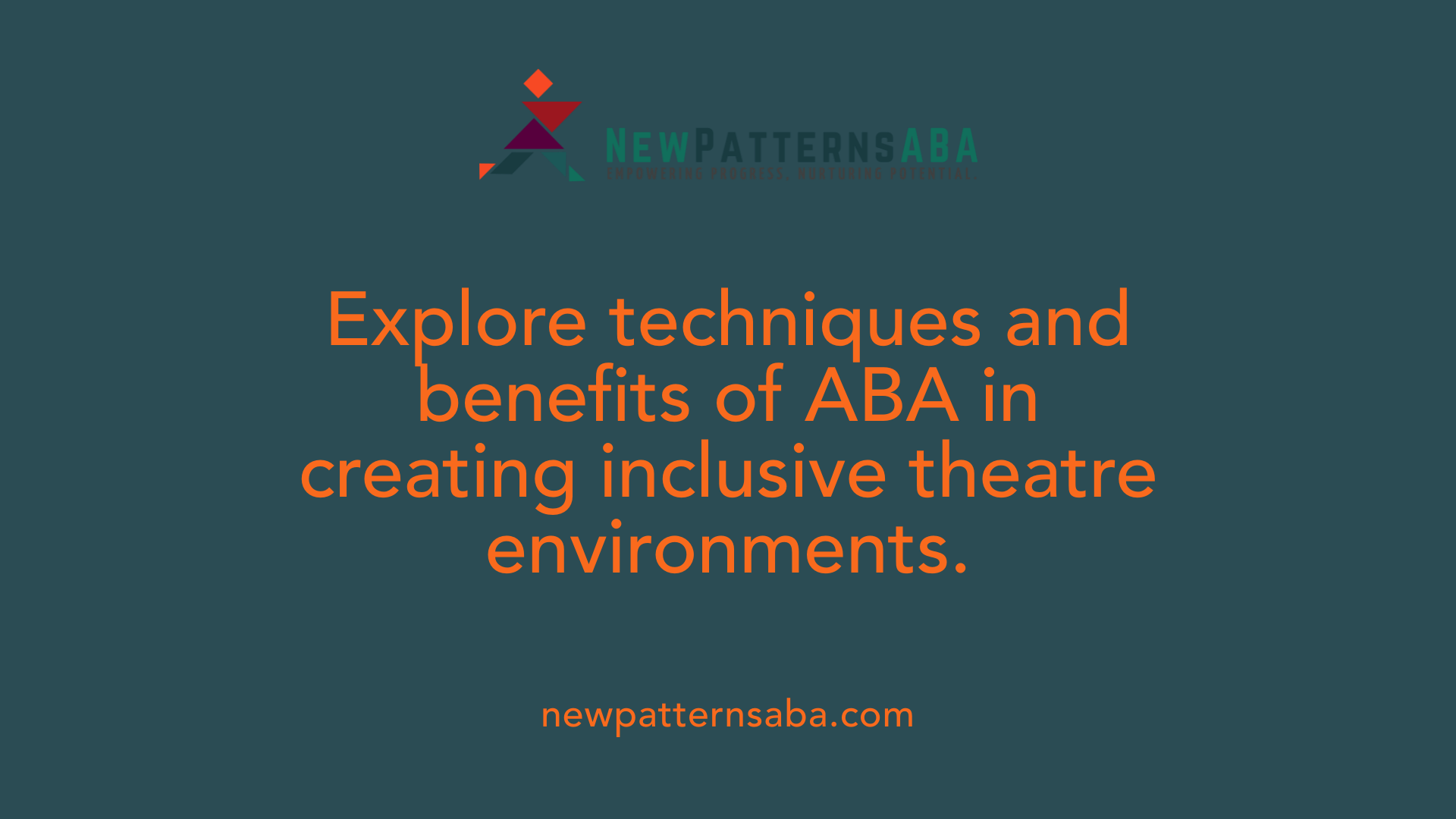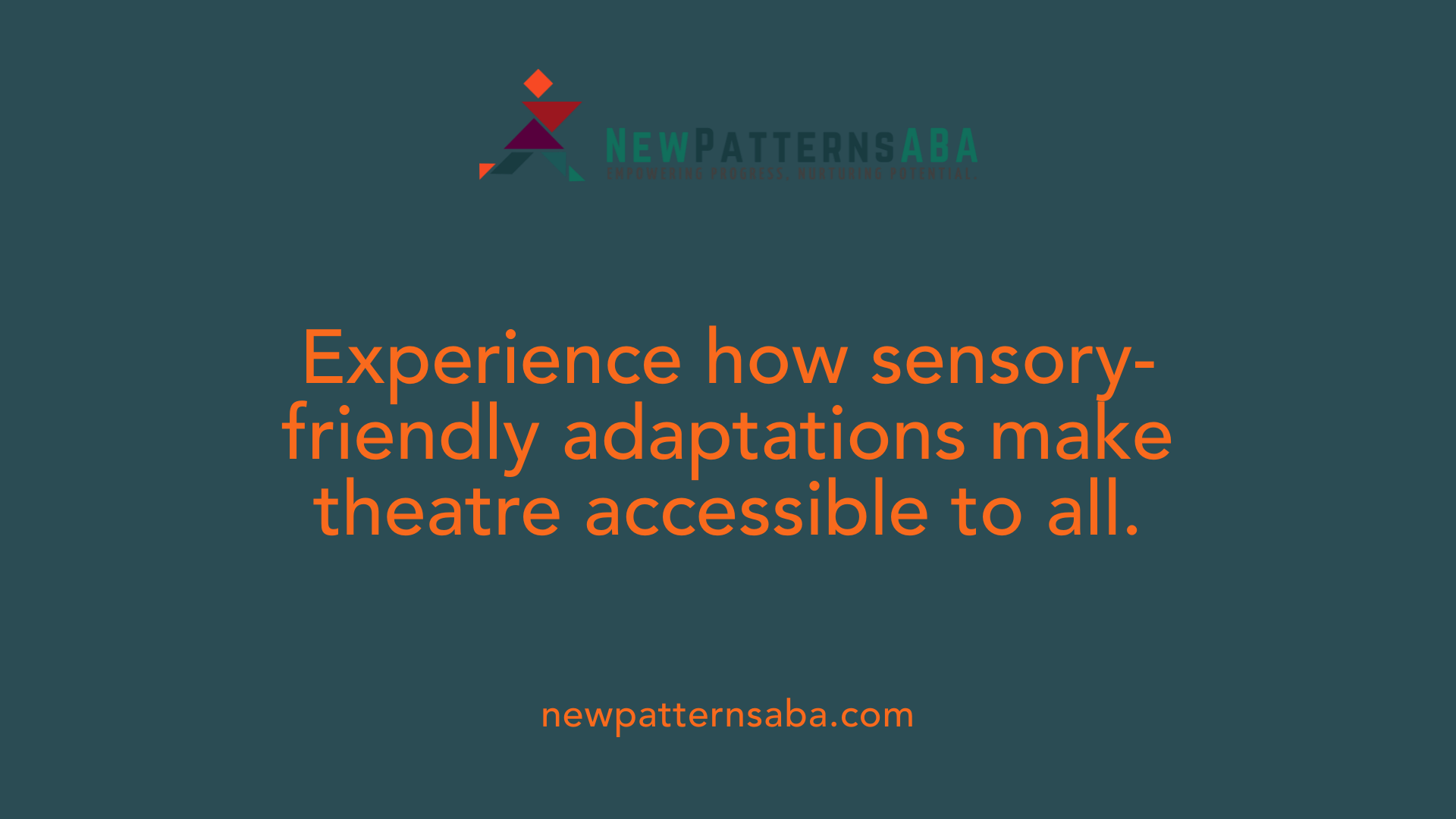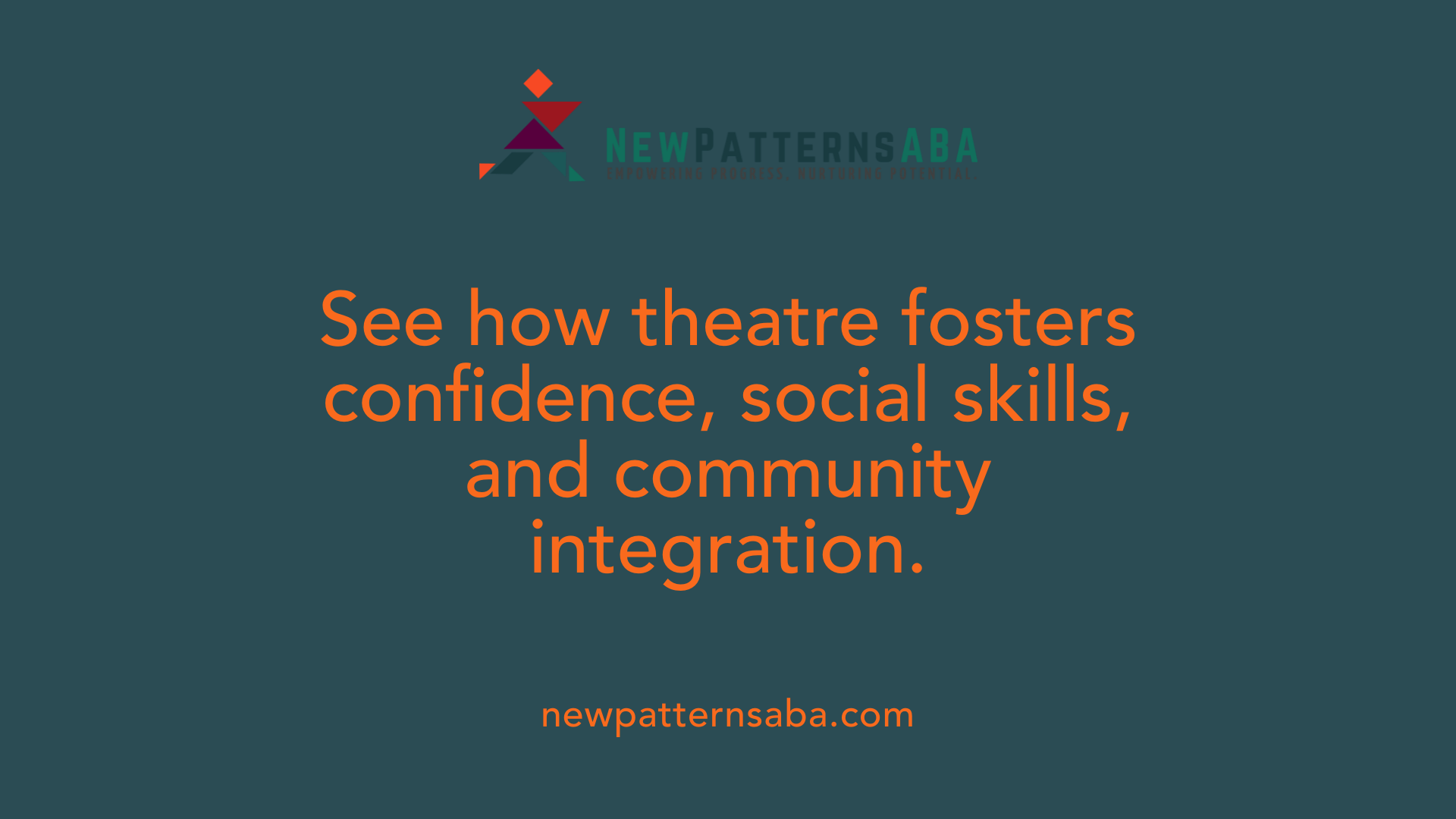The Intersection of Autism and Theatre: A New Approach to Social Inclusion
Inclusive theatre programs offer innovative approaches to supporting individuals with autism spectrum disorder (ASD). By blending artistic expression with structured social learning, these programs create welcoming environments that foster communication, social skills, and emotional growth. This article explores how theatre-based interventions and sensory-friendly performances enhance social inclusion and accessibility for people with autism, drawing from expert practices, community initiatives, and cutting-edge adaptations.
Harnessing the Power of ABA Therapy in Theatre-Based Programs

What is Applied Behavior Analysis (ABA) therapy?
Applied Behavior Analysis (ABA) therapy is a science-based approach that applies principles of learning and behavior to promote skill development and reduce problematic behaviors. It is widely used for individuals with autism spectrum disorder to target communication, social interaction, self-care, and academic skills. In practice, ABA involves detailed assessment and personalized interventions designed by trained professionals like Board Certified Behavior Analysts (BCBAs). Techniques such as positive reinforcement and behavior modification are employed within systematic, data-driven programs to encourage desirable behaviors. ABA’s adaptability makes it a well-regarded method across various environments, including theatre-based programs that support social and emotional development.
How does ABA therapy benefit individuals with autism?
ABA therapy offers substantial benefits by teaching essential life skills tailored to each individual's strengths and needs. It fosters communication, social engagement, and independence through evidence-based practices. Early and intensive ABA intervention has been shown to enhance cognitive and daily living abilities, leading to improved long-term outcomes. In theatre settings, the natural interaction involved in acting and role-play complements ABA’s focus on social skills, helping individuals with autism gain confidence and emotional understanding in a supportive environment.
What qualifications should ABA therapists have?
ABA therapists typically hold graduate degrees in Applied Behavior Analysis, psychology, or related fields. Credentialing as Board Certified Behavior Analysts (BCBAs) or Board Certified Assistant Behavior Analysts (BCaBAs) is standard, requiring supervised fieldwork and passing certification exams. These professionals bring expertise in assessing behaviors, tailoring interventions, and monitoring progress in diverse contexts, including community and theatre programs. Besides formal training, effective ABA therapists demonstrate empathy, active listening, and ethical commitment to client dignity, crucial for inclusive and respectful environments.
What techniques are commonly used in ABA therapy?
ABA therapy employs several core techniques to promote learning and behavior change. Positive reinforcement rewards desired behaviors to increase their frequency, while discrete trial training breaks skills into structured, manageable segments. Visual modeling through videos or pictures aids comprehension, and prompting guides skill acquisition before fading supports independence. Behavior chaining teaches complex tasks step-by-step, and strategies like extinction and redirection help reduce challenging behaviors. These techniques enable customized interventions that enhance social, emotional, and functional skills, aligning well with theatre-based programs designed for individuals with autism.
SENSE Theatre®: A Peer-Mediated Social Skills Intervention

What is the purpose and structure of SENSE Theatre®?
SENSE Theatre® is a community-based program designed specifically to improve social and emotional functioning in individuals with autism spectrum disorder (ASD). The program runs over 10 sessions and uses theatre-based activities to engage participants in interactive exercises that develop social competence. By leveraging theatrical methods that naturally involve observation, expression, and communication, the program creates an enriching environment tailored to the social learning needs of people with ASD.
How do peer actors contribute within naturalistic environments?
A distinctive feature of SENSE Theatre® is the inclusion of typically developing peer actors who are carefully trained to model social interactions, emotional expression, and imitation skills. These peers serve as spontaneous and natural social partners, providing real-time examples of effective social behavior. This peer-mediated approach fosters a supportive setting that encourages participants to practice and refine social skills in ways that mimic everyday social environments.
How does SENSE Theatre® integrate theatre, acting, and clinical science?
The program was founded by Dr. Blythe Corbett, who brings together her extensive background in theatre, writing, acting, and clinical science research. This unique blend of expertise allows SENSE Theatre® to bridge the performing arts and evidence-based clinical practices. The immersive nature of theatre combined with rigorous clinical methodologies enhances social and emotional skills development for participants with ASD.
What research partnerships and advocacy support the program?
SENSE Theatre® collaborates with philanthropic partners like ACM Lifting Lives® and benefits from research and advocacy support of Vanderbilt University Medical Center. These partnerships help fund the program's activities and promote dissemination of findings through talks, conferences, and public outreach events such as TEDxVanderbiltUniversity. This ongoing research and advocacy underscore the program’s commitment to enhancing social skills interventions for autism through innovative theatre-based approaches.
Adapting Theatre for Autism: Sensory-Friendly Performances

What modifications are made to support sensory sensitivities?
Theatre organizations take several steps to accommodate individuals with autism by creating sensory-friendly performances. These modifications include reducing jarring sounds and avoiding the use of strobe lights or intense spotlights, which can be unsettling. Performances are often held in smaller venues to minimize crowding, and house lights remain dim but on to provide a comforting atmosphere. Visual cues are given before any loud noises to help prepare the audience.
How are environmental and auditory adjustments implemented?
To reduce anxiety and sensory overload, environmental adjustments include keeping auditorium doors open to create a more open space and allowing patrons to move around freely during the show. Auditory enhancements like assistive listening devices improve sound quality for those with hearing sensitivities. The overall environment is designed to be less overwhelming, facilitating a calming experience for audience members with autism.
What sensory tools and communication aids are available?
Sensory bags containing noise-canceling headphones, earplugs, sunglasses, fidget toys, and communication supports are provided at events to help individuals manage sensory challenges. Theatres also supply core communication boards and visual supports such as choice boards, which increase predictability and assist patrons in understanding and engaging with the performance.
How are staff trained and audiences supported?
Front-of-house staff and volunteers receive specialized training on accessible services, accommodations, and expected behaviors to better support audience members with sensory needs. Autism specialists and volunteers remain available throughout performances to offer assistance. Additionally, quiet break areas are open for those who need to step away from the theatre, ensuring flexibility and comfort for all attendees.
Community Collaboration and Inclusion Strategies in Theatre
How do theatres engage with disabled and autism communities?
Many theatres actively engage with disabled and autism communities by consulting them throughout the development and delivery of inclusive performances. They gather feedback through surveys and focus groups to better understand audience needs and preferences. For instance, theatres like The Bushnell Center for the Performing Arts collaborate with autism specialists and volunteers during sensory-friendly shows to provide direct support. This ongoing dialogue ensures performances are adapted appropriately — such as modifying lighting and sound or providing visual aids — fostering welcoming and comfortable experiences.
How is feedback used to evolve inclusive practices?
Feedback from patrons plays a critical role in refining inclusive theatre offerings. Post-event surveys often highlight popular supports like fidgets, coloring materials, and quiet spaces, helping theatres prioritize accommodations that truly benefit their audiences. Adjustments based on comments, such as further reducing auditory stimuli or enhancing communication supports, show theatres’ commitment to continuous improvement. This responsiveness enhances the sensory environment and accessibility, cultivating trust and stronger relationships with community members.
What role do partnerships and sponsorships play?
Partnerships with local organizations and philanthropic sponsors are vital for sustaining inclusive theatre initiatives. Collaborations, like those between SENSE Theatre® and ACM Lifting Lives®, provide necessary funding to develop specialized programming for individuals with autism. Support from businesses and health organizations ensures resources for accommodations such as sensory bags or communication boards. These partnerships also promote community outreach, facilitating a broader inclusion of diverse participants across age groups and abilities.
How are volunteers and staff trained for accessibility?
Theatres invest heavily in the training of front-of-house staff and volunteers to equip them with knowledge about sensory needs, accommodations, and appropriate behavioral expectations. Training covers providing assistive devices, managing quiet areas, and supporting patrons with communication tools. Preparing personnel to sensitively and effectively respond to diverse needs enhances the overall accessibility and positive atmosphere. This dedication underscores the theatre’s mission to create inclusive spaces where everyone can enjoy live performances fully.
Benefits of Inclusive Theatre for Individuals with Autism

How does inclusive theatre enhance social competence and emotional expression?
Inclusive theatre programs, such as SENSE Theatre®, leverage the inherently interactive nature of theatrical exercises to improve social functioning in individuals with autism spectrum disorder (ASD). These exercises require participants to engage in observation, perception, interpretation, and emotional expression. Typically developing peer actors serve as role models for social interaction and emotional expression, creating a natural environment where participants can practice and develop these critical skills.
In what ways does theatre improve confidence and community participation?
Participation in theatre helps individuals with autism build confidence by providing structured opportunities to express themselves in a supportive setting. Personal stories from families highlight transformative impacts, including enhanced self-esteem and stronger social connections. Moreover, sensory-friendly and relaxed performances increase community participation by making theatre accessible to those with sensory sensitivities and other special needs.
Why is theatre considered a structured creative environment for individuals with autism?
Theatre offers a well-defined, creative space where individuals with autism can explore social cues and communication within predictable routines. This structure enables participants to gradually improve their social competence while feeling safe and supported. Adaptive techniques, such as sensory-friendly performances and the use of visual supports, further tailor the experience to meet diverse needs.
What are examples of special needs programs and adaptive techniques in theatre?
Programs like SENSE Theatre® and CenterPoint Legacy Theatre employ adaptive methods including peer modeling, sensory accommodations, and creative drama workshops tailored to various abilities. Environmental modifications—such as reducing auditory and visual stimuli, providing visual cues, and establishing quiet break areas—help create inclusive spaces. Additional supports include communication boards, assistive listening devices, and trained staff and volunteers knowledgeable in autism accommodations.
| Benefit Area | Description | Example Programs/Techniques |
|---|---|---|
| Social and Emotional Growth | Enhances social interaction and emotional expression | SENSE Theatre®, peer modeling |
| Confidence Building | Fosters self-esteem in a supportive, creative setting | Creative drama workshops, sensory-friendly performances |
| Structured Environment | Provides predictable routines for safe social learning | Use of visual supports and sensory accommodations |
| Accessibility and Inclusion | Adapts performances and space for diverse sensory needs | Sensory-friendly shows, communication aids, trained staff |
Future Directions: Innovations and Expanding Access in Inclusive Theatre
How is immersive technology enhancing inclusive theatre experiences?
Emerging immersive technologies, such as virtual reality (VR) and augmented reality (AR), are being explored to create more engaging and accessible theatre experiences for individuals with autism and other disabilities. These technologies can provide controlled sensory environments tailored to individual needs, helping participants better interpret social cues and practice communication in a safe, creative setting.
What developments are underway for universal access supports in theatre?
Universal access supports continue to evolve, including advanced assistive listening devices, customizable sensory bags, and enhanced visual communication tools like dynamic choice and core communication boards. These supports aim to increase predictability and reduce anxiety by offering consistent communication and sensory accommodations within the theatre environment.
How is disability theatre expanding its practices?
Disability theatre is broadening to actively involve individuals with disabilities not only as audience members but also as performers, creators, and decision-makers. This expansion promotes authentic representation, challenges societal stereotypes, and fosters cultural understanding through inclusive storytelling and diverse casting.
What strategies are being implemented to increase outreach and resource sharing?
Theatre organizations are strengthening community engagement by partnering with disability advocacy groups, local businesses, and educational institutions. They are enhancing resource sharing through workshops, online platforms, and collaborative productions, which help broaden access to inclusive theatre programs. These strategies build supportive networks and encourage wider participation from diverse communities.
Toward a More Inclusive Performing Arts Landscape
Inclusive theatre experiences are reshaping how individuals with autism engage with the community and the arts. By integrating behavioral science, sensory accommodations, and community collaboration, these programs provide vital opportunities for social development, emotional growth, and cultural inclusion. Moving forward, continued innovation, advocacy, and partnerships will be essential to expand accessibility and representation, ensuring that theatre truly welcomes and celebrates neurodiversity and all forms of ability.
References
- SENSE Theatre® – Stage of Hope for children, adolescents ...
- TDF Autism Friendly Performances | Accessibility Services
- Establishing Sensory Inclusive Theater Experiences
- Theatre For Special Needs
- Autism Services New York City
- Applied Behavior Analysis (ABA) Near Me in NYC
- How to Become an ABA Therapist - School of Education
- Your Complete Guide to Becoming an ABA Therapist
- ABA Techniques: Strategies for Behavior Analysts - GSEP Blog
- Applied Behavior Analysis (ABA)





